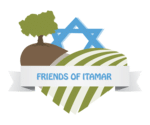Parashat Bereishit – Rectification – 2009
Parshat Bereishit October 15, 2009 The ultimate aim in the creation of man was that he should strive to emulate G-d by following His attributes, like by being compassionate, giving
Parshat Ha’azinu – Shabbat Shuva (Return!) – 2009
Parshat Ha’azinu – Shabbat Shuva (Return!) September 25, 2009 Moshe Rabbeinu signs, seals and delivers G-d’s message to Am Yisrael: Give ear, oh you heavens and I wil
Parashat Nitzvim – Standing Upright – 2009
Parshat Nitzavim September 11, 2009 “You stand upright this day, all of you before the Lord…” (D’varim 29 9:10) There are times to sit, times to run and tim
Parashat Ki Tavo “When you come into the Land” 2009
Parshat Ki Tavo September 3, 2009 “V’haya Ki Tavo el Ha’aretz” – “When you come into the Land”.(Dvarim 26:1) Being that this parsha falls on t
Parashat Re’eh – Roots and Identity – 2009
Parshat Re’eh August 13, 2009 When a person wants to validate his identity, he delves deep into his roots, verifies the provable facts; he can even check his genealogy and ex
Parashat Pinchas – “Honoring Heaven” – 2009
Pinchas July 10, 2009 “Honoring Heaven” Has drama taken an upscale since Hollywood came on the scene, or were people always attracted to the stage? The emotionalism one
Parashat Balak – Anti-Semitism – 2009
Balak July 1, 2009 Anti-Semitism is a real phenomenon. What gives it power is the failure of people to identify it. Balak is a powerful leader that seeks to bring Am Yisrael down t
Parashat Korach – “Ma-aseh avot siman lebanim” 2009
Korach June 18, 2009 Every story in the Torah tells us something about then and how it applies to now. This is called “Ma-aseh avot siman lebanim”= what happens in the
Parashag Shemini – A shining Light 2009
Shemini April 18, 2009 A candle can be fed or extinguished by the wind, depending on how it blows. If it blows too hard, the flame separates from the wick, therefore it blows out.
Parashat Ki Tavo
Parashat Ki Tavo Thursday, August 30, 2007 Last week’s parasha, Ki Tetzeh, ends with the mitzvah of remembering what Amalek did to us when we left Egypt. This weeks parasha

